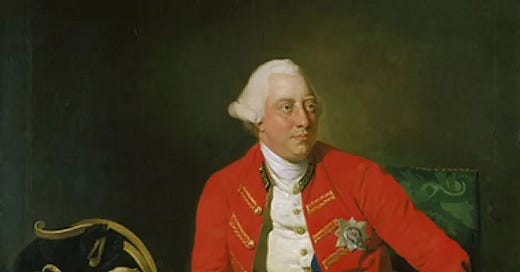Two-hundred and fifty years ago today (July 5, 1775), the Second Continental Congress of the British American Colonies sent off a missive to King George III. It was a friendly entreaty to the monarch—pleading with him to prevent further conflict between the colonies and the Crown.
The “Olive Branch Petition” expressed the genuine views of most of those gathered at Independence Hall in Philadelphia that summer—most notably articulated by delegate John Dickinson of Pennsylvania. Essentially, these men wanted to stay loyal to their Mother Country, but they needed the King to stop his Ministers from harassing the colonies they loved so much. A smaller contingent—led by John Adams of Massachusetts—felt war with Britain was inevitable.
The petition was almost embarrassingly deferential to the King, continuously stressing that his “loyal” colonists wanted to stop “the further effusion of blood”, and avert “the impending calamities that threaten the British Empire.” These references, of course, were to the events of the past April—when colonists clashed with British regulars at Lexington and Concord, Massachusetts. But the petition arrived in London around the same time as the news of the Battle of Bunker Hill, and King George had become convinced that the “Olive Branch Petition” was an insincere expression of a minority of his subjects in British North America.
On August 23, 1775, the King issued his “Proclamation of Rebellion”, declaring the American colonies in a state of open revolt against the Crown. The conflict escalated and less than a year later (July 4, 1776), the Continental Congress issued the Declaration of Independence. Negotiations were now futile—and both the colonists and King George had lost their last chance at reconciliation.



